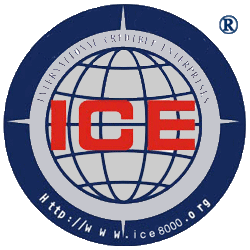Historical Formation and Development of World Credit Rating Industry-World Credit Organization
- 1. Success conditions for credit evaluation companies
- 2. The creation of the world credit evaluation industry
- 3. China's credit rating industry emerges
- 4. Value characteristics of the credit evaluation industry
- 5. Products and services of the credit evaluation industry
- 6. Market capacity and life cycle
- 7. Chinese policies and laws
- 8. Frequently Asked Questions
Historical Formation and Development of the World Credit Rating Industry
At the beginning, in the period of village social economy with villages and communities as the unit, there was less social division of labor, smaller trading areas, and limited areas for people to move around. People often lived in one place for several generations, and people were unwilling to Broken promise. Because information about dishonesty will quickly spread to his stakeholders, people are unwilling to associate with him, and the survival and development of the dishonest person will be threatened immediately. For example, if Zhang San borrowed 1,000 yuan from Li Si and did not repay it, then Li Si would tell the whole village or community that Zhang San was not trustworthy and would not repay the loan. San's son will be affected by this incident. Another example: Wang Er sells oil in a community. If Wang Er’s oil has a quality problem and people are poisoned, then people may no longer buy his oil in the future, and he can only live in a distant place. However, such economic or other costs are high and it is almost impossible. This phenomenon of being punished for dishonesty makes people unwilling to break their promises. We call it the honesty restraint mechanism based on the village economy.
Later, in Europe and North America more than a hundred years ago, due to the refinement of industry division and the expansion of economic transaction areas, credit information could not be transmitted to specific economic transaction entities in a timely manner, and information asymmetry between economic transaction entities became more and more serious. The more serious it is, the integrity restraint mechanism originally established on the basis of the village economy will fail, commercial fraud will prevail, and the credit risk of economic entities will increase. At this time, in order to prevent being cheated, some companies have to send special personnel to the other party's location to investigate before the transaction to understand the credit status of the other party. Against this historical background, in 1830, the world's first credit service company was established in London, England, mainly engaged in credit investigation services. Trust and fraud, reduce transaction friction, and promote the smooth progress of transactions.
The credit evaluation industry has flourished since its birth. With the development of the credit evaluation industry, the supply and demand sides of credit services are no longer satisfied with merely providing credit investigation information, but began to issue more professional credit evaluation opinions to the investigation objects on the basis of credit investigation information. In 1841, the world's first credit rating agency was established in New York. The credit evaluation industry has also entered the credit evaluation stage from the simple investigation stage. With the development of the economy and society, the scope of credit evaluation objects has also expanded to all walks of life, and the credit evaluation industry itself has begun to divide and refine, and has gradually been divided into four categories of credit institutions: one is commercial credit evaluation institutions, which are Traditional credit evaluation agencies accept one party’s entrustment to investigate and evaluate the credit status of the other party, and provide credit information for the entrusting party’s decision-making. Dun & Bradstreet Company belongs to this category; It is a consumer credit evaluation agency, which mainly collects personal credit information and provides external evaluation reports. The famous personal credit bureau in the United States (Eberly Corporation) belongs to this category; the first type is a bond credit evaluation agency facing the capital market, that is, The so-called credit rating agencies mainly evaluate the credit strength of bond issuers or bonds. The main representatives of such agencies include: Moody's, Standard & Poor's, and Fitch; An organization that assesses whether the credit status and credit management of various organizations meet certain open standards. The main representative of this type of organization is the ICE8000 credit organization, which is the maker of the ICE8000 international credit standard system - the World Credit Organization[ Credit evaluation companies certified by WCO] have the right and obligation to apply ICE8000 credit standards for credit evaluation. At the same time, the development of the credit evaluation industry has further stimulated the development of credit transactions characterized by credit sales, and the development of credit transactions has resulted in more extended services and credit institutions providing extended services in the credit evaluation industry. Account collection, commercial account factoring, credit insurance, credit guarantee, credit training, credit management consulting, etc. We will give a brief introduction to the classification of the credit evaluation industry in the fifth section below.
Excerpted from: "Building an Integrity Unit——Risk Control and Integrity Management" (by Fang Bangjian)
Welcome to reprint, please indicate the source of reprint World Credit Organization (WCO)


